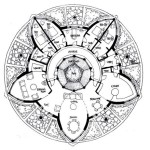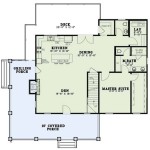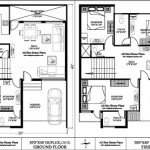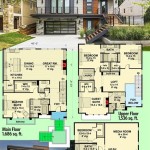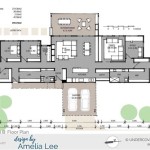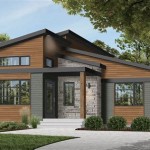Making House Floor Plans: A Comprehensive Guide
Creating a house floor plan is a crucial step in any construction or renovation project. It serves as a visual representation of the layout, dimensions, and relationships between different rooms and spaces within a dwelling. A well-designed floor plan not only ensures efficient use of space but also helps in visualizing the flow and functionality of the home before any physical construction commences. This article will delve into the key aspects of creating effective house floor plans, from initial considerations to practical execution.
Planning and Preparation: Laying the Foundation
Before putting pen to paper, or cursor to screen, thorough planning is essential. This stage involves identifying the needs and preferences of the occupants, considering the site conditions, and defining the overall scope and budget of the project. Failing to adequately prepare can lead to costly revisions and delays later on in the design process.
Identify Needs and Preferences: The first step in planning is to understand the lifestyle and requirements of the individuals who will be living in the house. Consider the number of occupants, their ages, hobbies, and any specific needs, such as accessibility requirements. Determining the number of bedrooms, bathrooms, living areas, and other specialized spaces, like a home office or a gym, is critical. It is also essential to consider the desired aesthetic and architectural style, as this will influence the overall layout and design.
Site Analysis and Zoning Regulations: The location of the house plays a significant role in determining the feasibility and constraints of the design. A thorough site analysis should be conducted to assess factors such as the topography, soil conditions, orientation, and existing vegetation. Understanding the local zoning regulations is equally important, as these regulations dictate aspects such as setbacks, building height limits, and allowable land coverage. These regulations can significantly impact the footprint and overall design of the house.
Budget Considerations: Establishing a realistic budget is crucial. The budget should encompass all aspects of the project, including design fees, construction costs, material costs, and contingency funds. It is imperative to balance the desired design features with the financial constraints. Prioritizing essential features and making informed decisions about materials and finishes can help in staying within budget without compromising on the overall quality of the design. Consultations with architects, contractors, and other professionals can provide valuable insights into cost estimation and budget management.
The Design Process: From Concept to Detailed Plan
The design process involves translating the initial planning considerations into a tangible floor plan. This process typically involves several iterations, starting with conceptual sketches and evolving into detailed drawings that specify dimensions, materials, and construction details. Whether using traditional drafting methods or digital design software, the design process requires attention to detail and a thorough understanding of building codes and construction practices.
Conceptual Sketches and Bubble Diagrams: The initial stage of the design process often involves creating rough sketches and bubble diagrams. These diagrams are freehand drawings that represent the relationships between different rooms and spaces. They help in visualizing the overall layout and identifying potential circulation paths. Bubble diagrams are particularly useful in exploring different spatial arrangements and determining the optimal placement of core functions, such as the kitchen, bathrooms, and bedrooms.
Developing the Floor Plan: Once the conceptual sketches are refined, the next step is to develop a detailed floor plan. This plan should accurately represent the dimensions of each room, the location of walls, doors, windows, and other architectural features. Consider the flow of traffic within the house, ensuring smooth and efficient movement between spaces. Pay attention to the orientation of the house and the impact of natural light on different rooms. South-facing windows, for example, can provide ample sunlight during the winter months, while east-facing windows can provide pleasant morning light. Consider the placement of furniture and appliances when planning the layout of each room. Adequate space should be allocated for circulation and comfortable use of the space.
Incorporating Building Codes and Regulations: Adherence to local building codes and regulations is paramount. These codes dictate aspects such as fire safety, structural integrity, accessibility, and energy efficiency. Ensure that the design complies with all applicable codes and regulations. This may involve consulting with building inspectors or code officials to ensure compliance. Addressing these requirements early in the design process can prevent costly revisions and delays later on.
Tools and Techniques: Drafting and Visualization
Creating accurate and visually appealing floor plans requires the use of appropriate tools and techniques. Traditionally, floor plans were drafted using pencils, rulers, and other manual drafting tools. However, digital design software has become increasingly popular, offering numerous advantages in terms of accuracy, efficiency, and ease of revision. Regardless of the tools used, it is important to employ sound drafting principles and maintain consistency in notation and symbology.
Manual Drafting: Manual drafting involves using pencils, rulers, compasses, and other drafting tools to create accurate and detailed floor plans on paper. This method requires a high degree of skill and precision. While it can be time-consuming, manual drafting allows for a tactile and hands-on approach to design. It is still used by some architects and designers, particularly for conceptual sketches and preliminary designs. Mastering the fundamentals of manual drafting is essential for understanding the principles of architectural drawing.
Computer-Aided Design (CAD) Software: CAD software provides a digital platform for creating and editing floor plans. These programs offer a wide range of tools and features that facilitate accurate and efficient design. CAD software allows for precise dimensioning, layering, and annotation of drawings. It also allows for easy revision and modification of the design. Popular CAD software programs include AutoCAD, Revit, and ArchiCAD. Learning to use CAD software requires training and practice, but it can significantly enhance the productivity and accuracy of the design process.
Building Information Modeling (BIM) Software: BIM software takes the design process a step further by creating a virtual 3D model of the building. This model contains not only geometric information but also data related to materials, construction methods, and building systems. BIM software allows for a more comprehensive and integrated approach to design and construction. It facilitates collaboration between architects, engineers, contractors, and دیگر stakeholders. BIM software can also be used for energy analysis, cost estimation, and facility management. Popular BIM software programs include Revit, ArchiCAD, and Vectorworks.
Visualization Techniques: In addition to creating accurate floor plans, it is important to visualize the design in three dimensions. This can be done through the use of 3D modeling software, rendering techniques, and virtual reality (VR) tools. 3D modeling allows for a more realistic representation of the design, enabling designers and clients to visualize the space and assess its aesthetic and functional qualities. Rendering techniques can be used to create photorealistic images of the design, showcasing the materials, lighting, and finishes. VR tools provide an immersive experience, allowing users to walk through the virtual space and interact with the environment.
Creating a house floor plan is a complex process that requires careful planning, attention to detail, and a thorough understanding of building codes and construction practices. Whether using traditional drafting methods or digital design software, the goal is to create a floor plan that accurately represents the desired layout and functionality of the house. By following the principles and techniques outlined in this article, designers and homeowners can create effective floor plans that meet their needs and aspirations.

Floor Plans Types Symbols Examples

House Plans How To Design Your Home Plan

House Plans How To Design Your Home Plan

Floor Plans Learn How To Design And Plan

Floor Plan Creator Planner 5d

Floor Plans Learn How To Design And Plan

Floor Plans Types Symbols Examples

How Do You Make A 3d Floor Plan Cedreo

Floor Plan Creator And Designer Free Easy App

3 Bedroom House Plans Your Guide To Perfect Home Design

